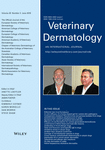Journal list menu
Export Citations
Download PDFs
Issue Information
Editorial
Scientific Papers
Bacterial skin diseases
In vitro efficacy of a honey-based gel against canine clinical isolates of Staphylococcus pseudintermedius and Malassezia pachydermatis
- Pages: 180-e65
- First Published: 22 March 2018
Background - Staphylococcus pseudintermedius and Malassezia pachydermatis are important agents in canine pyoderma and otitis. Hypothesis/Objectives - Determine the in vitro efficacy of a honey-based gel (HBO) against meticillin-susceptible S. pseudintermedius, meticillin-resistant S. pseudintermedius and M. pachydermatis, by minimum bactericidal concentration, minimum fungicidal concentration and time-kill assay. Efficacy of the product's honey component (HO) also was evaluated. Conclusions and clinical importance - Staphylococcus pseudintermedius and M. pachydermatis are susceptible to the HBO and these results can be used for future clinical trials.
Identification of VIM-2 metallo-β-lactamase-producing Pseudomonas aeruginosa isolated from dogs with pyoderma and otitis in Korea
- Pages: 186-e68
- First Published: 25 March 2018

Background – Pseudomonas aeruginosa is a challenging pathogen cultured from cases of acute and chronic canine otitis and sometimes in cases of deep pyoderma. The spread of antimicrobial resistance, especially carbapenem resistance, is a serious therapeutic challenge worldwide. Hypothesis/Objectives – To investigate the identification and characterization of resistant P. aeruginosa clinical canine isolates. Conclusions and clinical importance – This study demonstrated the diversity of the phenotype and genotype of clinical P. aeruginosa isolates from dogs with pyoderma and otitis. The identification of VIM-2-producing P. aeruginosa in dogs is alarming and warrants further surveillance.
Impact of systemic antimicrobial therapy on mucosal staphylococci in a population of dogs in Northwest England
- Pages: 192-e70
- First Published: 17 April 2018
Background – Antimicrobial-resistant bacteria are increasingly isolated from veterinary patients. Objectives – To determine risk factors for antimicrobial resistance (AMR) among canine mucosal staphylococci following routine antimicrobial treatment with cefalexin, clavulanate-amoxicillin, cefovecin, clindamycin or a fluoroquinolone. Conclusions – Systemic antimicrobials impact on mucosal staphylococci. Immediately after therapy, the mucosa may be a reservoir for AMR staphylococci that are a source of mobile genetic elements carrying AMR genes.
Parasitic skin disease
Efficacy and safety of sarolaner against generalized demodicosis in dogs in European countries: a non-inferiority study
- Pages: 203-e72
- First Published: 08 February 2018
Background – Treatment of canine demodicosis can be challenging; new treatments are always being sought. Objective – The efficacy of sarolaner was evaluated in comparison with a moxidectin/imidacloprid topical product against generalized demodicosis in dogs in a randomized, single-masked, multi-centre field study. Conclusions – Monthly oral administration of sarolaner was safe and highly effective in the treatment of generalized demodicosis in dogs.
A field trial in Thailand of the efficacy of oral fluralaner for the treatment of dogs with generalized demodicosis
- Pages: 208-e74
- First Published: 08 February 2018
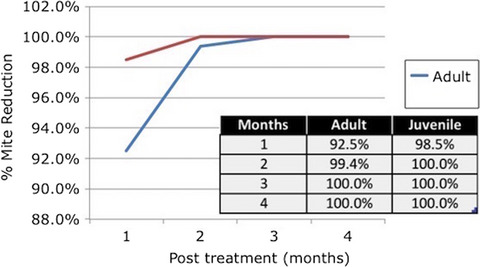
Background- Generalized demodicosis in dogs can be challenging to manage, especially in adult-onset cases. Hypothesis/objectives - This study evaluated the efficacy of oral fluralaner at the dose of 25–50 mg/kg for the treatment of canine generalized demodicosis. Conclusion - Fluralaner given at the label dose for flea and tick prevention is effective for the treatment of canine generalized demodicosis.
Viral, rickettsial and protozoal skin diseases
A retrospective histopathological, immunohistochemical and molecular study of the presence of Leishmania spp. in the skin of cats with head and neck ulcerative dermatitis
- Pages: 212-e76
- First Published: 25 March 2018
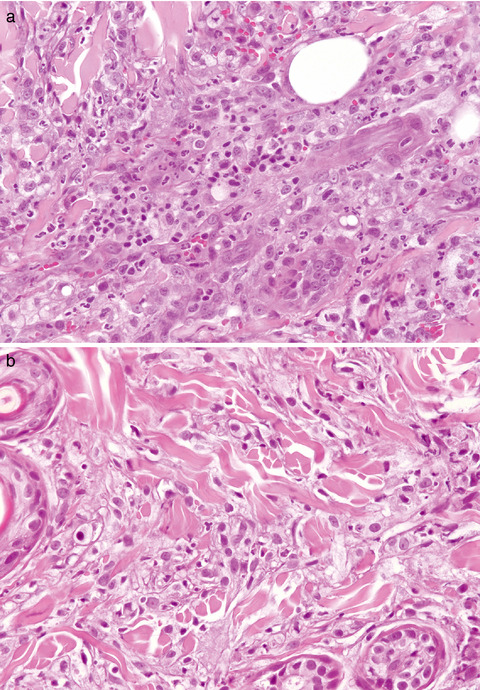
Background – Cutaneous head and neck ulceration in cats can arise from allergic and nonallergic disorders, including feline leishmaniosis (FeL). It is important to rule out this aetiological agent in regions that are endemic for canine leishmaniosis, because the drugs used to treat immune-mediated disorders of cats can be contraindicated in the setting of infection. Hypothesis/Objectives – The aim of this study was to evaluate the skin of cats with ulcerative dermatitis of the head or neck for evidence of Leishmania infection using combined immunohistochemistry (IHC) and PCR. An IHC for tissue histiocytes also was utilized because leishmaniosis may provoke a histiocytic inflammatory response. Conclusions and clinical importance – Leishmania did not seem to play a role in the pathogenesis of feline ulcerative dermatitis of the head and neck in the subjects studied, despite a lifestyle potentially associated with infection. Histiocytic infiltration of tissue is not a specific marker for Leishmania infection in this population.
Hypersensitivity disorders
An assessment of a Western blot method for the investigation of canine cutaneous adverse food reactions
- Pages: 217-e78
- First Published: 06 April 2018
Background – Adverse food reaction (AFR) is diagnosed with a two month elimination diet (ED), followed by challenge with the original food. Hypothesis/Objective – To evaluate reactivity of selected ED and performance of a Western blot serological test for the diagnosis of AFR. Conclusion – Western blot analysis cannot be considered as a valid tool for the diagnosis of AFR; it may serve as an aid in selecting an ED.
Total and Toxocara canis larval excretory/secretory antigen- and allergen-specific IgE in atopic and non-atopic dogs
- Pages: 222-e80
- First Published: 09 February 2018
Background – Total IgE concentrations in dogs are higher than in humans. Persistent Toxocara canis larval infestation is prevalent in dogs and is associated with substantial specific antibody reactions. A correlation, however, between total IgE and T. canis-specific antibody levels in dogs has not been evaluated. Objectives – To determine the relationship between total IgE, T. canis-specific IgG and IgE, and allergen-specific IgE levels in atopic and non-atopic dogs, and to evaluate possible confounding factors. Conclusions –Toxocara canis-specific IgE appears to be a major component of total IgE in dogs. Total and T. canis-specific IgE levels are higher in non-atopic compared to atopic dogs. It is speculated that T. canis infestation may have a protective effect against the development of canine atopic dermatitis and/or that elevations in total serum IgE level are often not associated with atopic dermatitis.
Selected serum oxidative stress biomarkers in dogs with non-food-induced and food-induced atopic dermatitis
- Pages: 229-e82
- First Published: 01 February 2018
Background - Oxidative stress (OS) has been shown to be involved in the pathogenesis of human and canine atopic dermatitis (AD) through several distinct mechanisms. Selected serum biomarkers of OS (sbOS) have been validated in normal dogs and studied in several canine diseases. To the best of the authors’ knowledge, the sbOS evaluated in this study have not previously been described in canine AD. Hypothesis/Objectives - The aims of the study were to evaluate a panel of sbOS in dogs with food-induced (FIAD) and nonfood-induced (NFIAD) AD: cupric reducing antioxidant capacity (CUPRAC), ferrous oxidation-xylenol orange (FOX), ferric reducing ability of the plasma (FRAP), paraoxonase-1 (PON1), trolox equivalent antioxidant capacity (TEAC) and serum total thiol (THIOL). The aim was to compare these metabolites with those in healthy control dogs, and to correlate sbOS with validated pruritus and CADESI-04 severity scales in dogs with AD. Conclusions and clinical relevance - These findings suggest that OS could play a role in the pathogenesis of canine NFIAD and FIAD. In addition, the evaluation of sbOS could be useful for precision medicine to help to detect atopic dogs that might benefit from antioxidant-targeted therapies.
Zoo and wildlife
Clinical and histopathological aspects of an alopecia syndrome in captive Andean bears (Tremarctos ornatus)
- Pages: 234-e85
- First Published: 31 January 2018
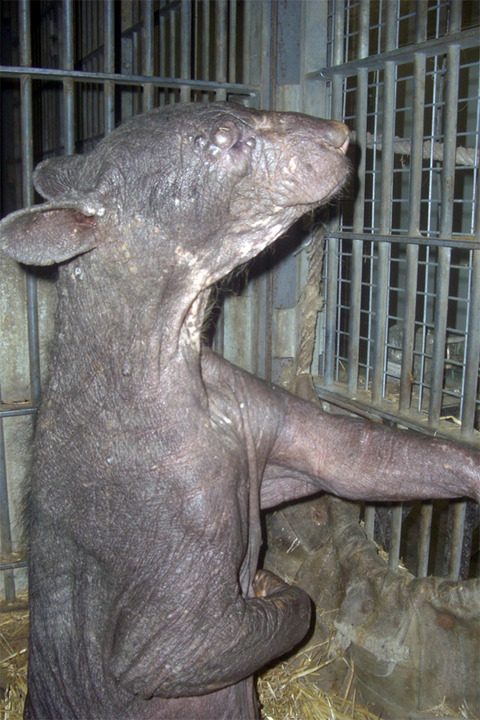
Background – Captive Andean bears (Tremarctos ornatus) develop a distinct alopecic syndrome of unknown aetiology. Hypothesis/Objectives – To describe the histological features of healthy Andean bear skin, to define the clinical and histopathological features of Andean bears with signs of alopecia, and to propose an aetiopathogenesis. Conclusion and clinical importance – Andean bear alopecia syndrome is an acquired, progressive alopecia with histological features consistent with a lymphocytic immune-mediated reaction directed against follicular sheaths and the epidermis. Trigger factors have not been identified. Further studies are indicated to define the features of this multifactorial syndrome.
Brief Communications
Isolation and identification of Acinetobacter spp. from healthy canine skin
- Pages: 240-e87
- First Published: 11 February 2018
Background –Acinetobacter species can exhibit widespread resistance to antimicrobial agents. They are already recognized as important nosocomial pathogens of humans, but are becoming increasingly recognized in opportunistic infections of animals. Hypothesis/objectives – This study aimed to determine whether Acinetobacter spp. are carried on skin of healthy dogs and, if present, to identify the species. Conclusions and clinical importance – The study confirms that Acinetobacter spp. can survive on canine skin, where they may be potential reservoirs for infection. This highlights the importance of good hygiene in veterinary practice, adhering to aseptic principles in surgery, and treatment based on culture and susceptibility testing where possible.
A preliminary study of serum IgE against cross-reactive carbohydrate determinants (CCD) in client-owned atopic dogs
- Pages: 243-e90
- First Published: 01 March 2018
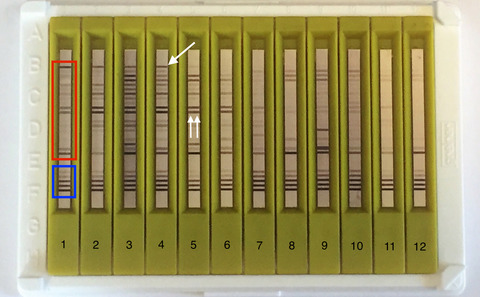
Background – Cross-reactive carbohydrate determinants (CCD) are defined carbohydrate portions of glycoprotein cell-surface molecules common to many plant and insect species. Mammalian species recognize CCD as foreign antigens and can mount humoral immune responses against them. Approximately 20–37% of grass and venom allergic people possess circulating IgE against CCD; these antibodies are generally considered clinically irrelevant. Anti-CCD IgE is, however, recognized as a cause of false positive, clinically incongruent serum allergen test results in people; this phenomenon has not been investigated in animals. Objectives – To determine if anti-CCD IgE could be detected in sera of client-owned atopic dogs and how frequently it is found. Conclusions and clinical importance – Anti-CCD IgE can confound serological allergen testing in people; the same might be true in dogs. Further studies are warranted to investigate the clinical implications of anti-CCD IgE in dogs, including the potential for these antibodies to affect serum allergen-specific IgE assays used for clinical diagnosis, and whether they are relevant to clinical disease.
Expression of IL-33 in chronic lesional skin of canine atopic dermatitis
- Pages: 246-e91
- First Published: 02 March 2018
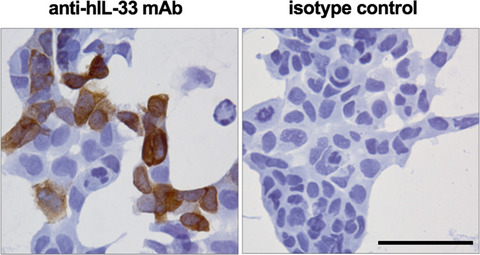
Background – In humans, interleukin (IL)-33 plays a critical role in the enhancement of allergic skin inflammation. However, it currently remains unclear whether IL-33 is involved in the pathogenesis of canine atopic dermatitis (cAD). Objectives – To examine the expression of IL-33 in chronic lesional skin of cAD. Conclusions and clinical importance – The results indicate that IL-33 is involved in chronic lesional skin of cAD.
The anti-inflammatory effect of topical tofacitinib on immediate and late-phase cutaneous allergic reactions in dogs: a placebo-controlled pilot study
- Pages: 250-e93
- First Published: 06 March 2018
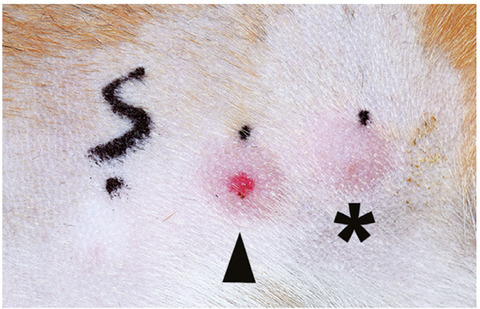
Background – Topical Janus kinase (JAK) inhibition is a promising therapeutic target for several inflammatory skin diseases of humans. Objectives – To evaluate the anti-inflammatory effect of tofacitinib, a JAK 1/3 inhibitor, on immediate and late-phase skin reactions in dogs. Conclusions – Our observations suggest that topical tofacitinib exerts an inhibitory effect on activated canine skin-emigrating immune cells; this drug should be investigated further as a topical immunosuppressive drug in dogs.
Case Reports
Skin lesions in Aubrac cows strongly associated with fly bites (Haematobia irritans)
- Pages: 254-e94
- First Published: 01 March 2018
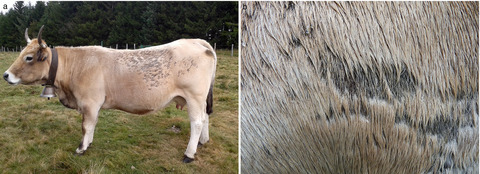
Background – The horn fly Haematobia irritans is known to cause problems in cattle including weight loss and decreased milk production; cutaneous lesions have not been widely reported and descriptions of the clinical manifestations are quite variable. Hypothesis/objectives – This study describes the clinical and histopathological lesions of several Aubrac cows that presented with focal to confluent areas of alopecia, skin scaling and thickening, suspected to be induced by H. irritans bites. Conclusion and clinical importance – Fly-bite (H. irritans) dermatitis should be included in the differential diagnosis of alopecic dermatoses in cows.
Feline herpesvirus ulcerative dermatitis: an atypical case?
- Pages: 258-e96
- First Published: 06 April 2018
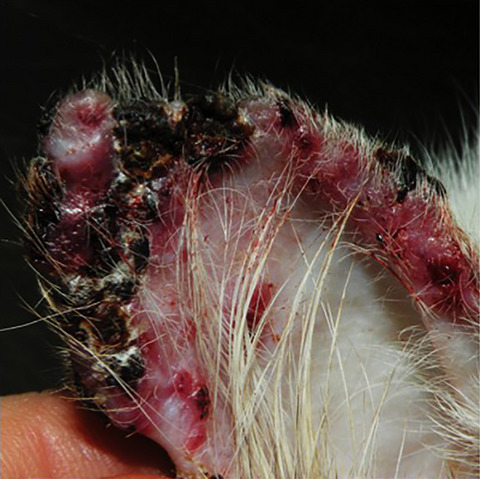
Background Feline herpesvirus ulcerative dermatitis is an uncommon skin disease in cats, with a predominantly facial distribution characterized by massive infiltration of eosinophils and, occasionally, predominant neutrophils. Objective To describe the clinical and histopathological features of a putative atypical case of feline herpesvirus dermatitis. Conclusions and clinical importance This case is noteworthy for the infrequent location on the pinna and the atypical histopathological features of the lesion, with a predominant infiltration of mast cells and plasma cells. Our findings suggest that herpesvirus dermatitis should be listed as a differential diagnosis in case of ulcerative dermatitis when the location and histological features are atypical.
Letters to the editor
Efficacy of oral fluralaner for the treatment of Demodex gatoi in two shelter cats
- Page: 262
- First Published: 31 January 2018
Fecal flotation in the detection of canine Demodex mites
- Pages: 263-264
- First Published: 26 March 2018




